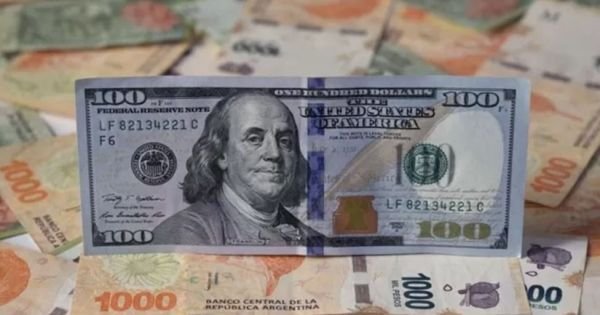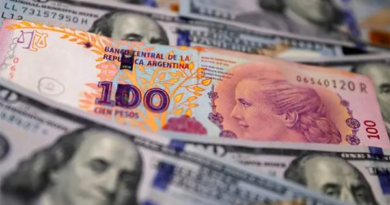Argentina: Record highs in parallel dollar rates as the country grapples with economic challenges
[ad_1]
Argentina: Record highs in parallel dollar rates as the country grapples with economic challenges
While the wholesale dollar rises by only 70 cents to $819.30, the dynamic blue dollar or parallel rate was around $1,240, near its intraday nominal peak of $1,250, presenting a 51.4% gap
The strength of the dollar in alternative markets is once again exerting pressure on financial dealings on Thursday, with the exchange rate gap reaching 60%, posing challenges to President Javier Milei’s economic plan amidst soaring inflation and increasing poverty.
”The repetitive devaluation pressure not only distorts foreign trade but also complicates maintaining the official parity with a controlled 2% monthly increase (‘crawling peg’), says a government statement. This occurs as retail price hikes surpass 20%, exacerbating the reluctance to invest in the local currency.
Global dollar strength due to the expected extended status quo in the US Federal Reserve’s interest rates further hampers the Argentine government, which assumed office on December 10.
While the wholesale dollar rises by only 70 cents to $819.30, the dynamic blue or parallel rate was around $1,240, near its intraday nominal peak of $1,250, presenting a 51.4% gap—just two weeks ago, it averaged 25%.
Read also: Milei holds “very good” meeting with Georgieva
Simultaneously, the electronically traded currency, known as MEP, hits a record $1,244, and the contado con liquidación through stock transactions reached $1,300 for the first time, with a 60% exchange rate gap compared to the official rate.
The government’s ‘honeymoon’ is starting to fade because it faces a complex political scenario. Added to this is the lack of peso investments that outperform inflation, making holding dollars the fundamental tool at hand, comments analyst Marcelo Rojas, as quoted by Infobae.
The carry trade disintegrates as Argentina grapples with one of the highest retail price increases globally, reaching 211.4% in 2023. Meanwhile, the official dollar skyrocketed 118% in a single day on December 13, hitting 800 pesos.
Despite these drastic fluctuations, December witnessed some stabilization for free-market dollars, driven by market confidence in a sustainable 2% monthly increase for the official dollar. However, the 20% to 30% surge in free-market dollars at the start of 2024 shattered the optimism tied to peso interest rates.
In Argentina, with a monthly inflation rate of 25%, 9% interest rates, and bonds with negative real rates, it’s no genius move to know that what soars is the dollar, remarks financial analyst Christian Buteler.
A gradual devaluation challenging to maintain: The ‘crawling peg’ is unsustainable, so it wouldn’t surprise me if one day we wake up to another significant devaluation by the central bank. Aside from correcting the gap with this, it would accelerate the liability dilution encouraged by this government and further reduce the fiscal deficit,” states a seasoned currency operator to Reuters.
The government is currently negotiating in Congress, where it holds a minority, to unlock an omnibus law aimed at laying the foundation for extensive economic deregulation. This adds to an existing decree (DNU) facing judicial objections that are hindering part of the implementation.
There are still expectations for progress from the ‘Omnibus Law’ and the DNU to improve economic agents’ expectations, crucial to trying to cushion the costs associated with the urgent plan’s implementation, says economist Gustavo Ber. This is because there are still several months until the eagerly awaited harvest, with positive prospects, which could provide some economic and financial relief through increased dollar supply, he adds.
The financial market coexists with stringent exchange controls (cepo) since September 1, 2019, restricting free access to dollars, distorting the economy, and encouraging business outside traditional channels. The new government pledged to dollarize the economy, close the Central Bank, eliminate the fiscal deficit, curb inflation, and reduce poverty levels in society.
[ad_2]
Source link




